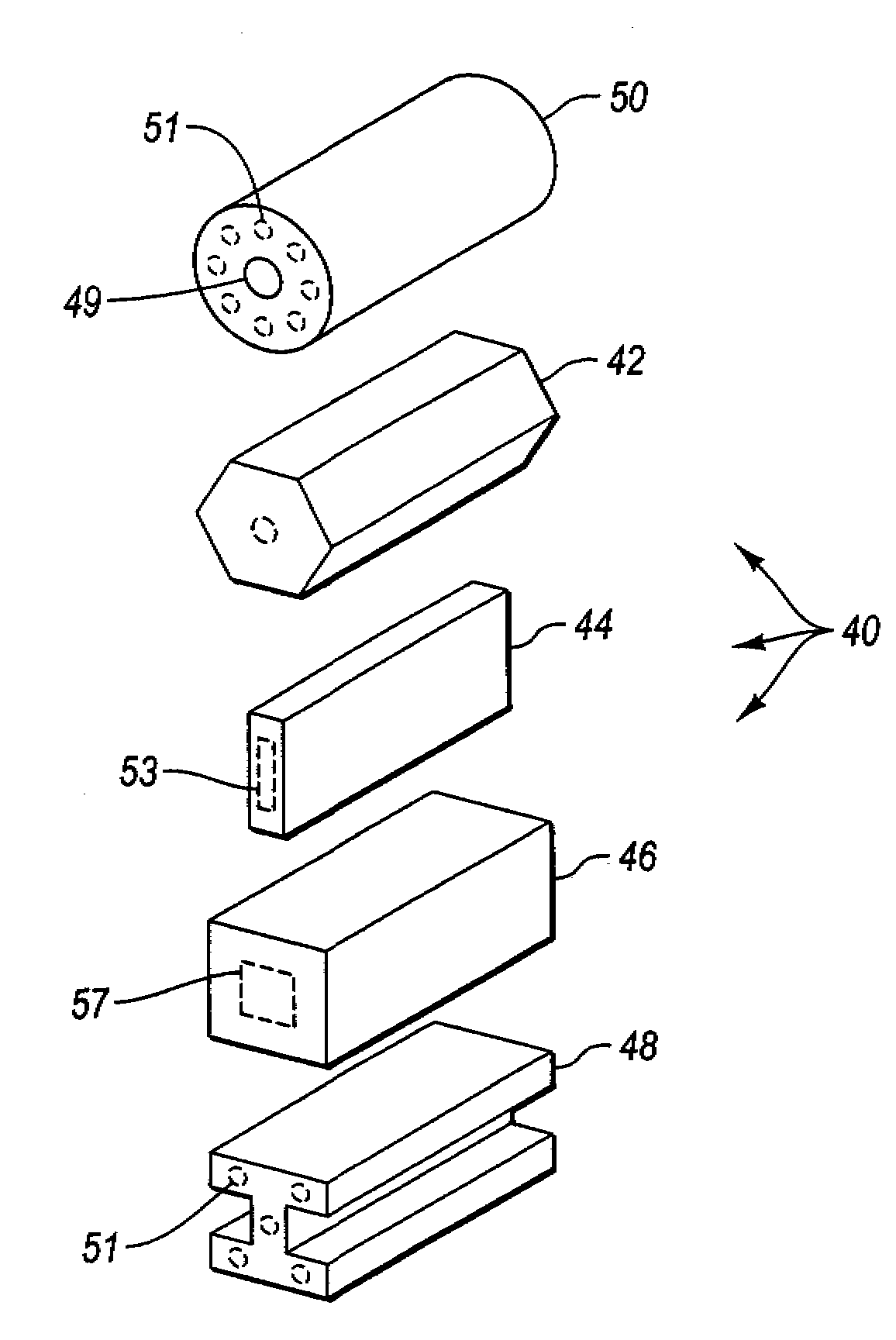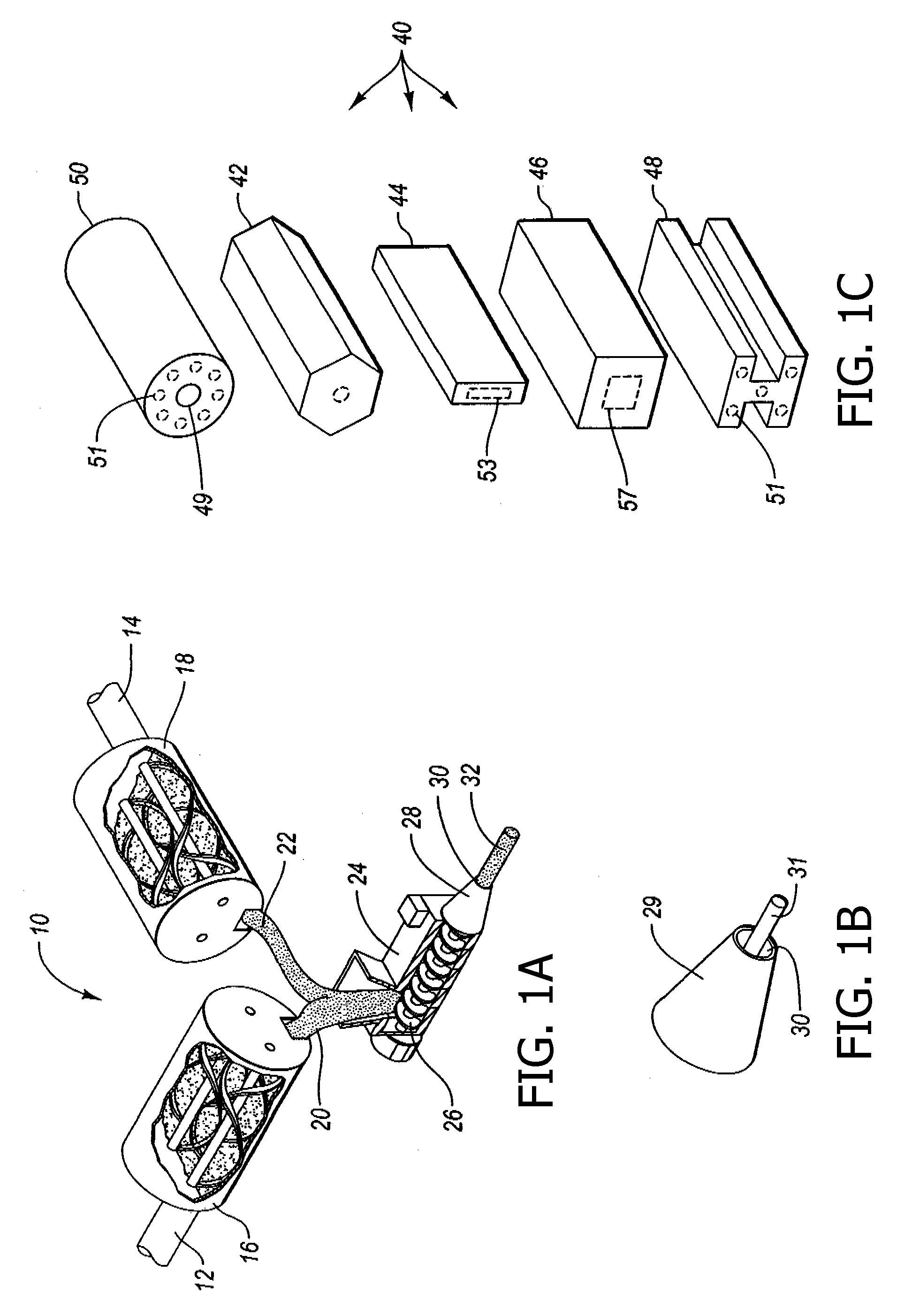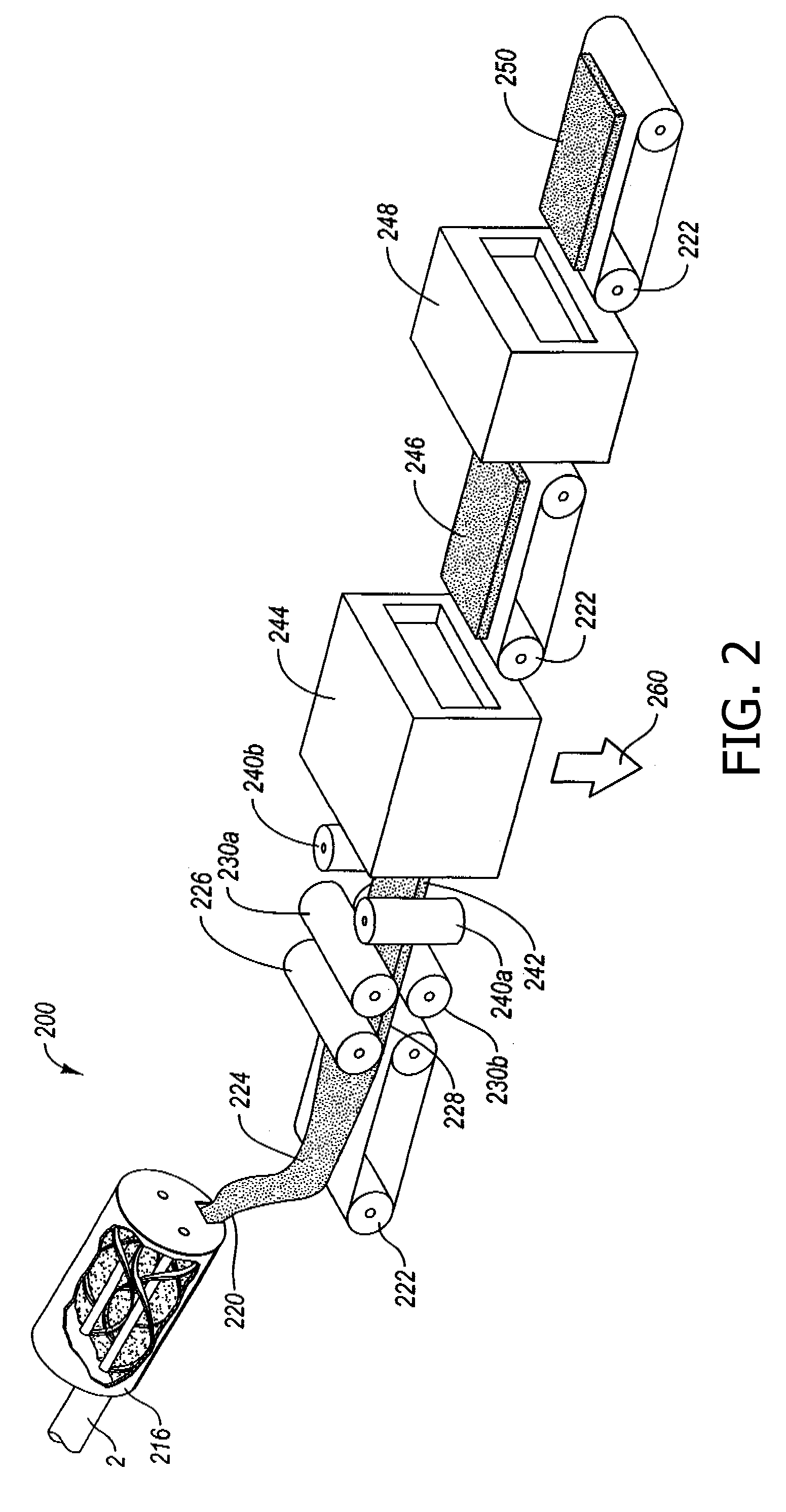Extruded fiber reinforced cementitious products having wood-like properties and ultrahigh strength and methods for making the same
a technology of extrudable cement and fiber reinforced cement, which is applied in the direction of natural mineral layered products, water-setting substance layered products, solid waste management, etc., can solve the problems of affecting the quality of extrudable products, so as to reduce the amount of water that is initially used to form extrudable compositions and yields high stability , the effect of reducing
- Summary
- Abstract
- Description
- Claims
- Application Information
AI Technical Summary
Benefits of technology
Problems solved by technology
Method used
Image
Examples
examples of embodiments
OF THE DISCLOSURE
Example 1
[0193]Various extrudable compositions having different component concentrations were prepared in accordance with the present disclosure. The components of the compositions were mixed according to the normal mixing procedures described above and in the references incorporated herein. The extrudable compositions were formulated as illustrated in Table 1.
TABLE 1CompositionCompositionCompositionComponent123Materials (Wet)44.8045.1648.30(Kg)Water (Kg)20.0020.002350Cement (Kg)16.0016.0016.00PVA Fiber (8 mm)0.600.600.60Hardwood Fiber7.007.000.00Newspaper0.000.007.00Methocel (2401.201.201.20HPMC)Expancel0.000.360.00
[0194]Following mixing, the compositions were extruded through a die head having a rectangular opening of about 1 inch by about 4 inches. Three samples of each of the three compositions were used for preparing composite building products in the shape of a one-by-four. The sample products were cured in plastic at ambient conditions for about 7 days. The p...
example 2
[0196]Various extrudable compositions having varying methocel to cement ratios were prepared in accordance with the present disclosure. All compositions were mixed according to the normal mixing procedures described above and in the references incorporated herein. The extrudable compositions were formulated as illustrated in Table 3.
TABLE 3CompositionCompositionCompositionCompositionComponent4567Materials (Wet)48.3044.8045.4056.40(Kg)Water (Kg)23.5020.0021.0024.00Cement (Kg)16.0016.0016.0024.00PVA Fiber0.600.600.600.60(8 mm)HW0.007.007.007.00Newspaper7.000.000.000.00Methocel (2401.201.200.800.80HPMC)SW = softwood and HW = hardwood
[0197]Following mixing, the compositions were extruded through a die head having a rectangular opening of about 1 inches by about 4 inches. Eight samples for each composition were used to prepare composite building products in the shape of a one-by-four product. The sample products were cured in plastic at ambient conditions for about 7 days. The plastic wa...
example 3
[0201]Two cementitious compositions were prepared and processed into a cementitious building product, and the building product was tested to determine physical properties.
[0202]Briefly, two cementitious building products (16′ long 1×4 boards) were prepared by mixing and extruding composition 7 as described in Table 3. One board was produced including pins / rods within the extruded composition and the second board was produced without pins. The products were covered in plastic and stored at room temperature for about 28 days to set. The set extrudate was then placed in plastic for 7 additional days, the plastic was removed and the boards were then steam cured for about 5 days. The cured boards were then placed in a dry chamber for about 3 days and were planed and cut to be sent out for flexural strength and screw / nail hold testing. Specifically, a 6″ segment was cut from the end of each board for density and moisture content testing. Testing showed that the boards each had a bulk dens...
PUM
| Property | Measurement | Unit |
|---|---|---|
| density | aaaaa | aaaaa |
| flexural strength | aaaaa | aaaaa |
| flexural strength | aaaaa | aaaaa |
Abstract
Description
Claims
Application Information
 Login to View More
Login to View More - R&D
- Intellectual Property
- Life Sciences
- Materials
- Tech Scout
- Unparalleled Data Quality
- Higher Quality Content
- 60% Fewer Hallucinations
Browse by: Latest US Patents, China's latest patents, Technical Efficacy Thesaurus, Application Domain, Technology Topic, Popular Technical Reports.
© 2025 PatSnap. All rights reserved.Legal|Privacy policy|Modern Slavery Act Transparency Statement|Sitemap|About US| Contact US: help@patsnap.com



